Welcome to one of the most extraordinary steaks, the Reversed Seared Dry-Aged Ribeye. In the world of steaks, few cuts demand the reverence and attention as the dry-aged ribeye. Dry-aging intensifies the depth of beef flavor and reverse searing bring out its natural flavors and textures. Join us as we explore the flavor and tenderness of a perfectly prepared dry-aged ribeye.
Can You Dry Age Just One Steak?
Dry aging usually involves an entire roast, like a prime rib or a beef tenderloin. But, for this recipe, I dry aged a single steak. While you can absolutely dry age a single steak, there is more loss than there is when dry aging an entire roast.
The dry aging process dries out the outer surface of the meat, and that has to be trimmed off and discarded before cooking. Dry age a roast and you will trim off a little more than 1/16" but will still have a lot of roast left. Dry age a single steak and you will still trim trim off about 1/16" from both sides but ALL of that trimming is coming off one steak. The solution is to buy the thickest steak possible. If your butcher has only 1" ribeyes in the case, ask for a 1 ½" - 2" ribeye, you will be glad you did.
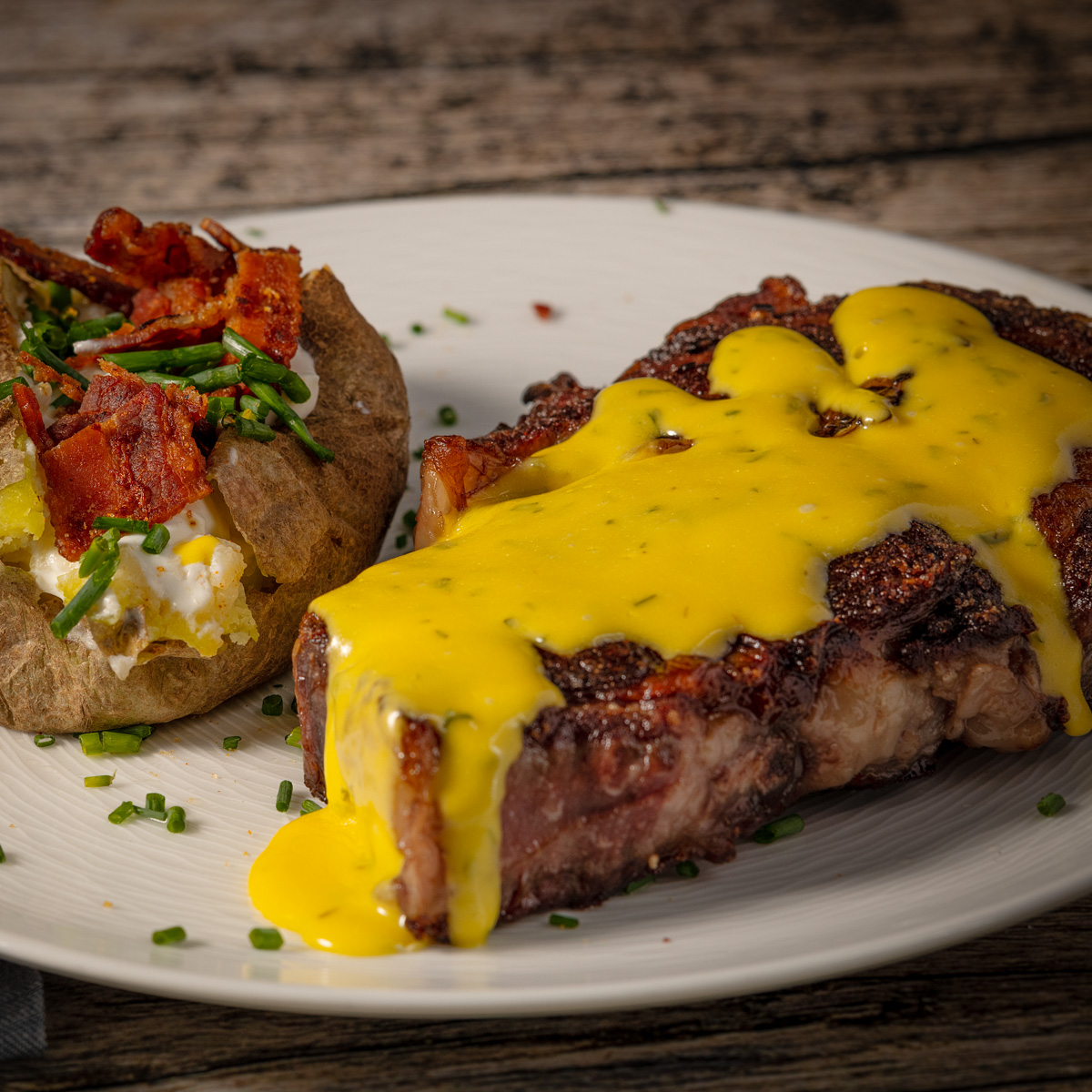
In planning for this recipe, I found a prime Wagyu ribeye and used that in the preparation. A prime or choice ribeye would also have worked.
This recipe is great to serve for a special occasion, dinner party or the holiday season. It was inspired by my other recipes for Prime Tenderloin Reverse Seared, Filet Mignon with Bone Marrow Butter and Reverse Seared Dry Aged Prime Rib.
Also, see my post Best Beef: A Comprehensive Guide to Popular Cuts of Steak.
Jump to:
Ingredients
- Wagyu ribeye steak
- Garlic
- Fresh thyme
- Butter
- Beef tallow
See Reversed Seared Dry-Aged Ribeye recipe card for quantities.
Instructions
Dry Age the Steak
Dry age the steak in the refrigerator for 5 days. I used a neat little bag specifically designed for dry aging meat. It is available online and worth the small investment. It does a great job.
One important point, be careful not to dry age too long. In creating this recipe, I dry aged a Wagyu ribeye for 7 days and that was too long. Next time I will dry age for only 5 days.
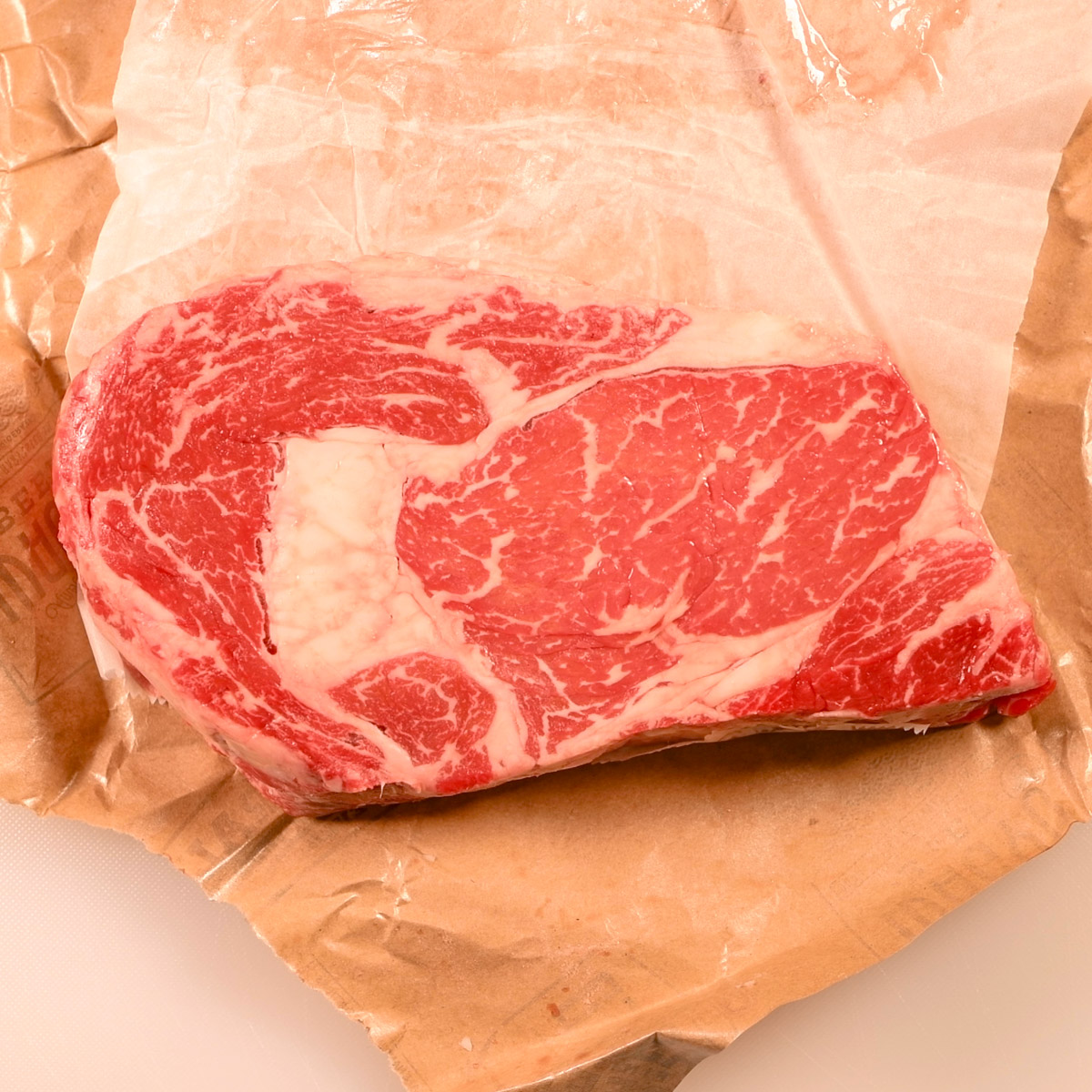
A Wagyu ribeye steak ready to dry age.
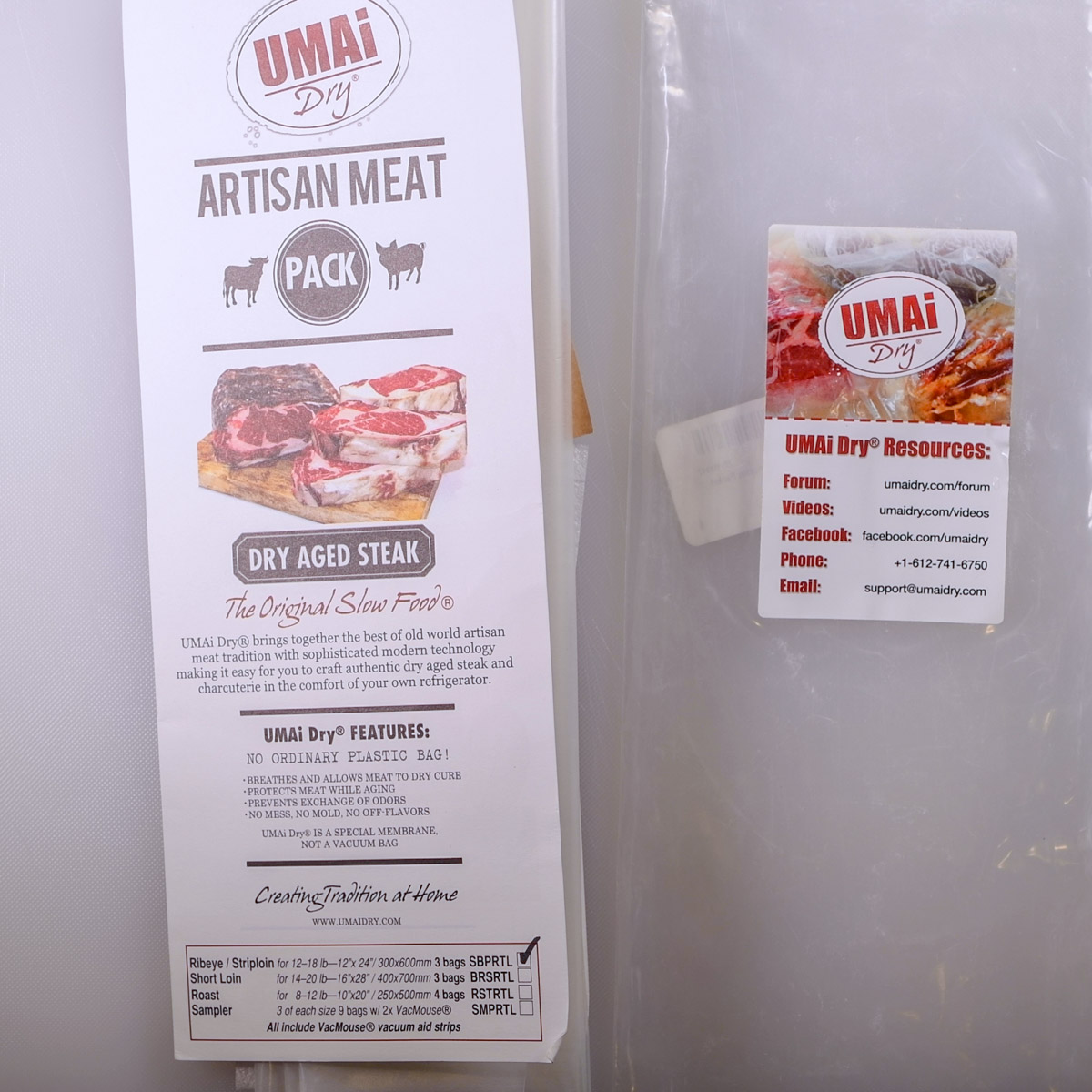
A bag used for dry aging.
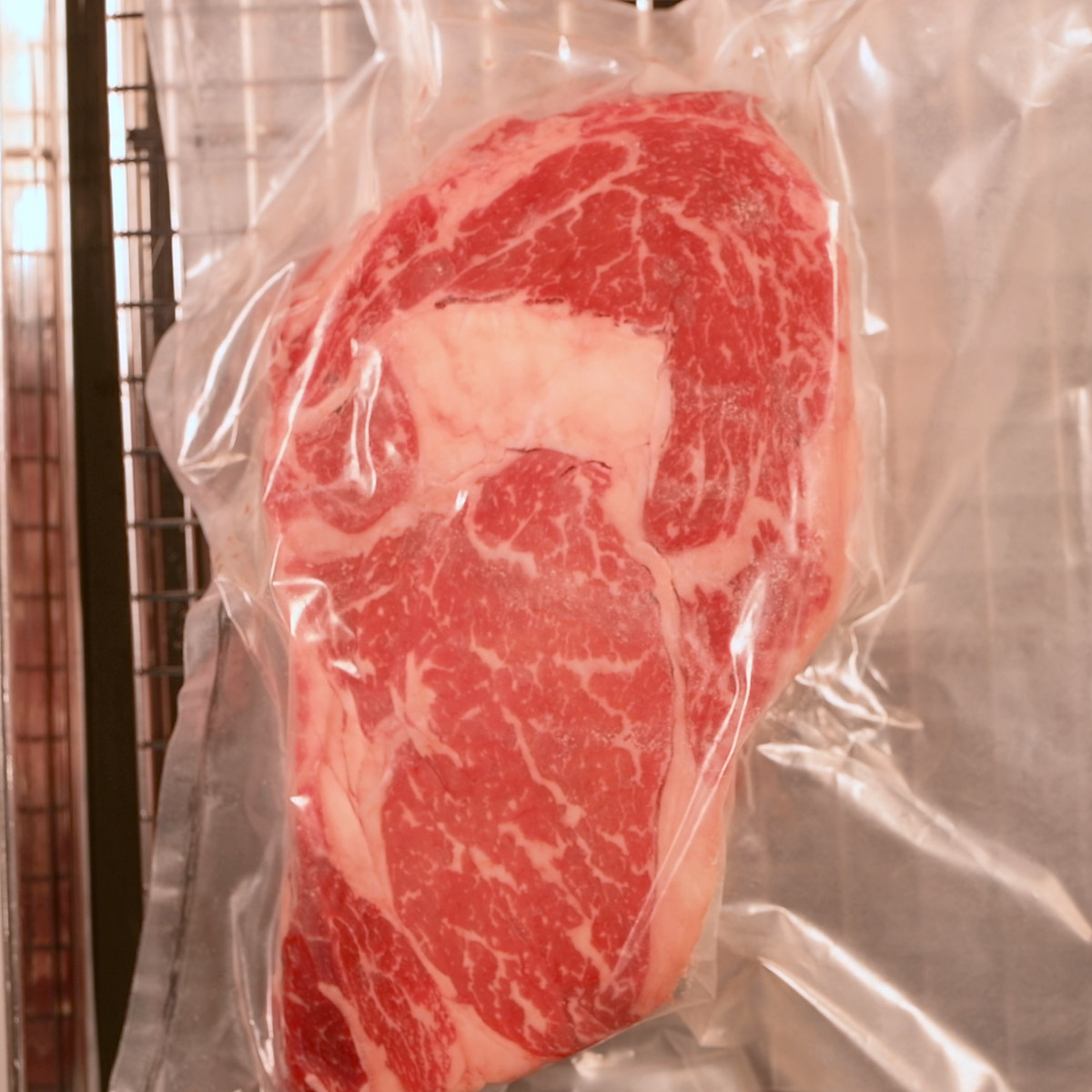
Seal the ribeye in a dry aging bag.
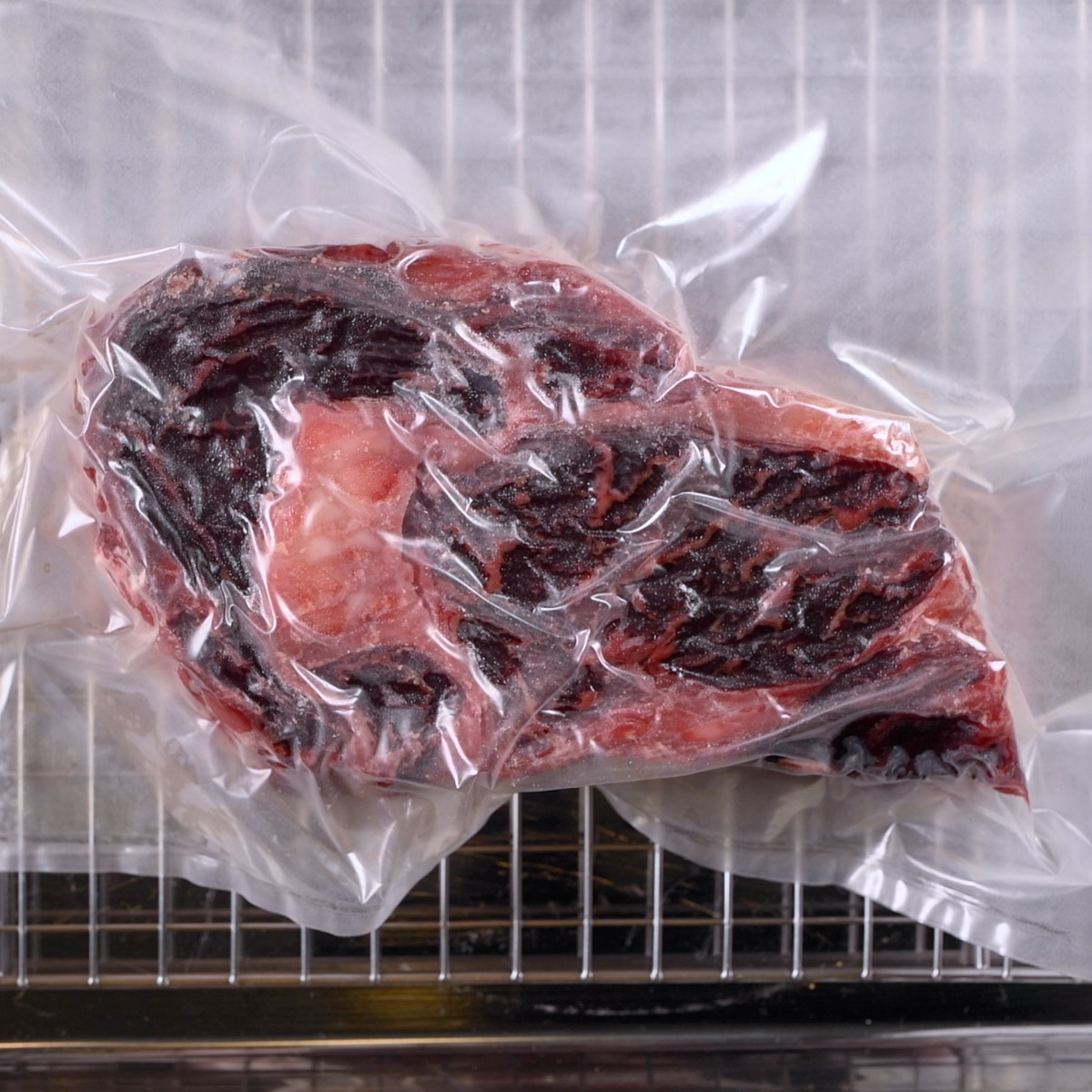
Ribeye steak after dry aging.
After dry aging, this steak lost 9% of it's total weight. That loss of water intensifies the beefy flavor.
Trim the Dry Aged Steak
Prepare a dry aged steak for cooking involves some serious trimming. The dry aging process will dry out the exterior of the steak and there will be a lot of surface area that will need to be trimmed. Use a sharp knife to carefully trim down the fat and any dark red meat and discard. Remove as little meat as possible, trimming only the very dark areas.
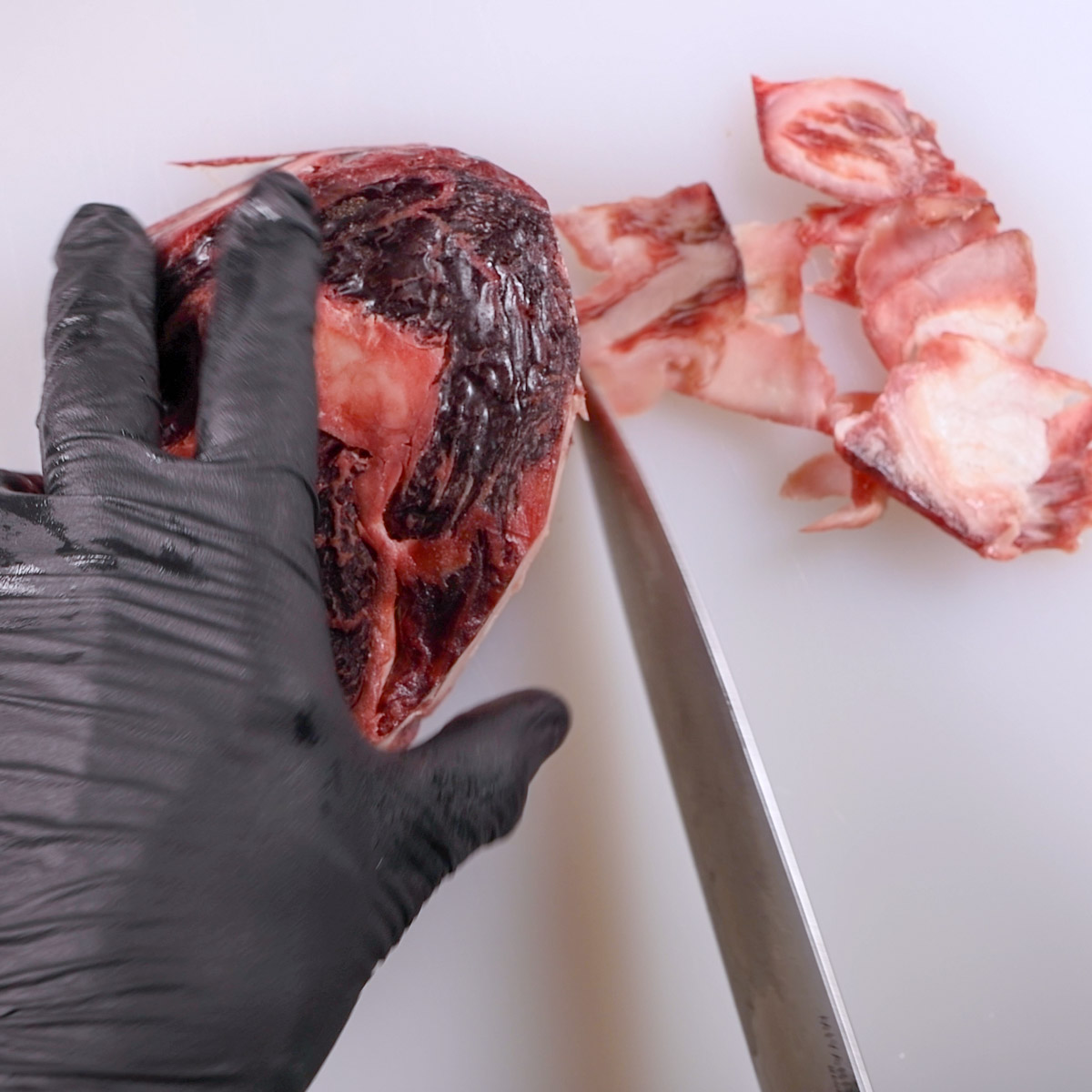
Trim the dry aged ribeye before cooking.
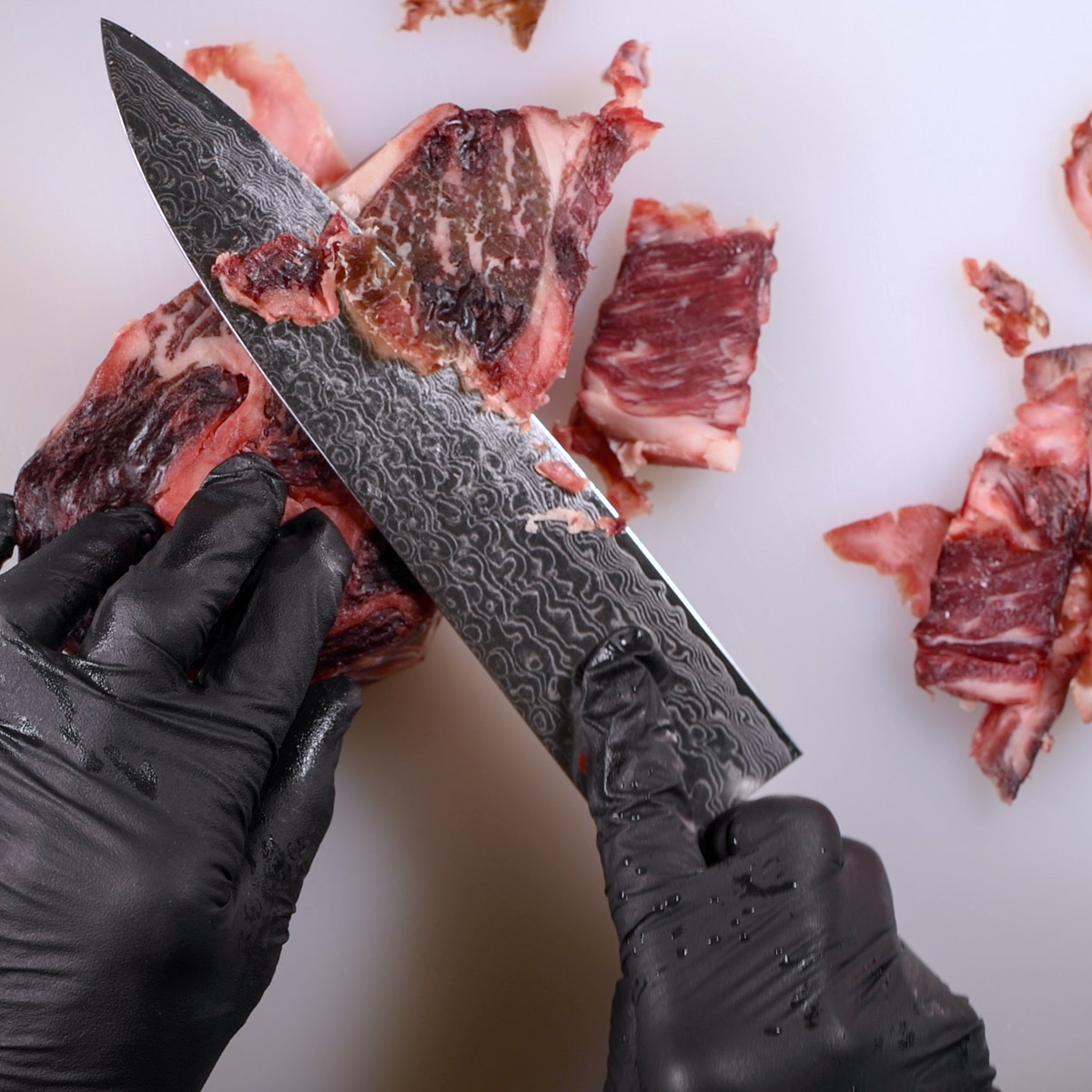
Carefully trim away dried areas of meat.
After trimming, the steak lost another 10% of its total weight. That's why you want to buy a thick steak to start with.
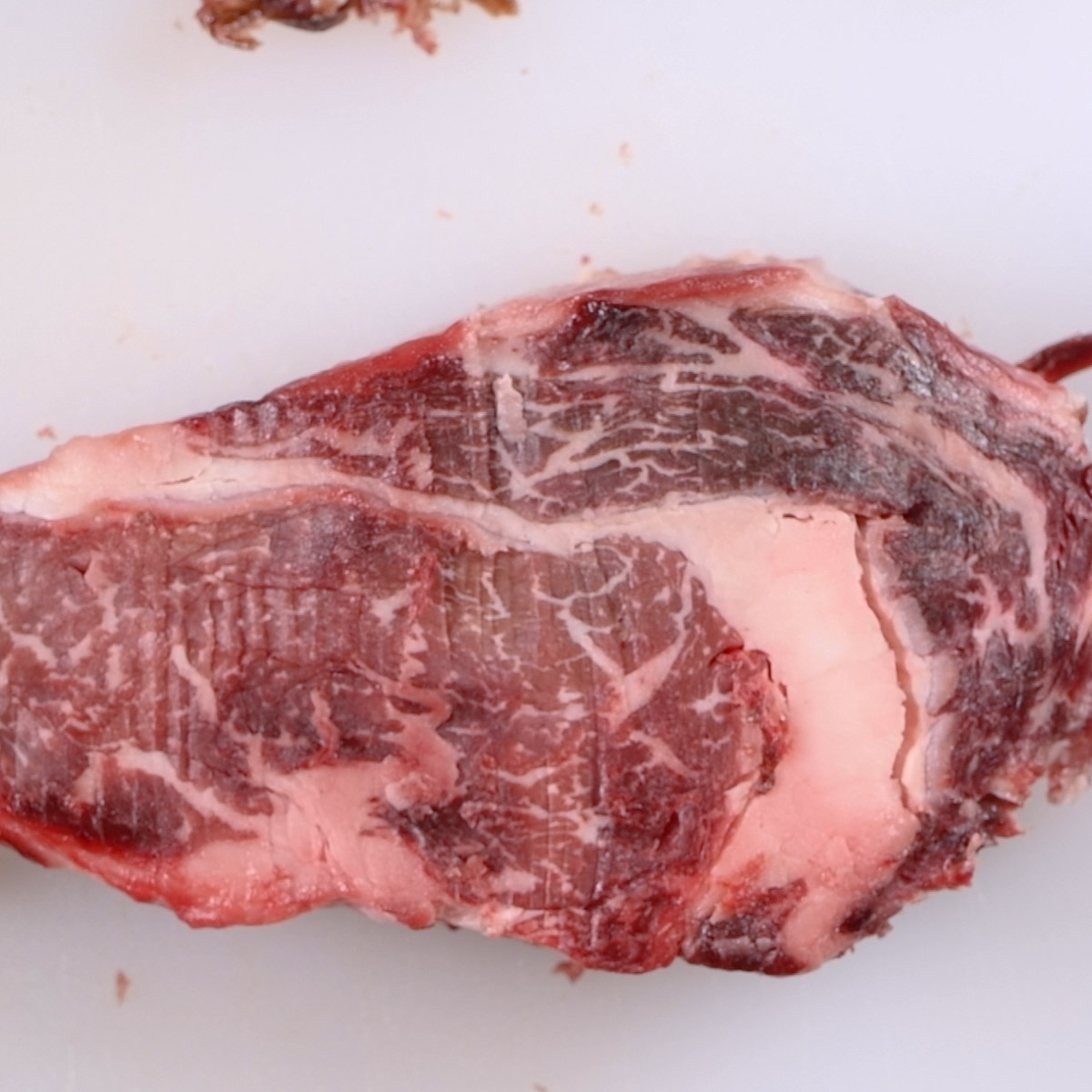
Cook in Sous Vide Water Bath
Because this was an expensive steak and I had a lot of time invested in it, I did not want to throw it on the grill and risk overcooking it. So, I sealed in it a FoodSaver bag along with some herbs and butter and placed it in a sous vide bath set at 122˚F. Sous vide is perfect for this application. Since the water was only 122˚F there was no way the steak could go above that number. I was guaranteed a perfect medium-rare ribeye steak. Now all that was left to do was sear the outside a bit.
The sous vide cooking method is a great tool to ensure even cooking of a steak. When heat is applied to a steak on a grill, it cooks from the outside towards the center. If the heat source is too high, there is a significant temperature difference between the outer layers and the center of the steak. This can lead to the outer layers becoming overcooked before the center reaches the desired temperature.
By utilizing the sous vide method, the steak cooks at a very low temperature so the heat has time to evenly distribute throughout the steak. This allows the steak to cook more uniformly from edge to edge, resulting in a perfectly cooked steak with consistent doneness throughout.
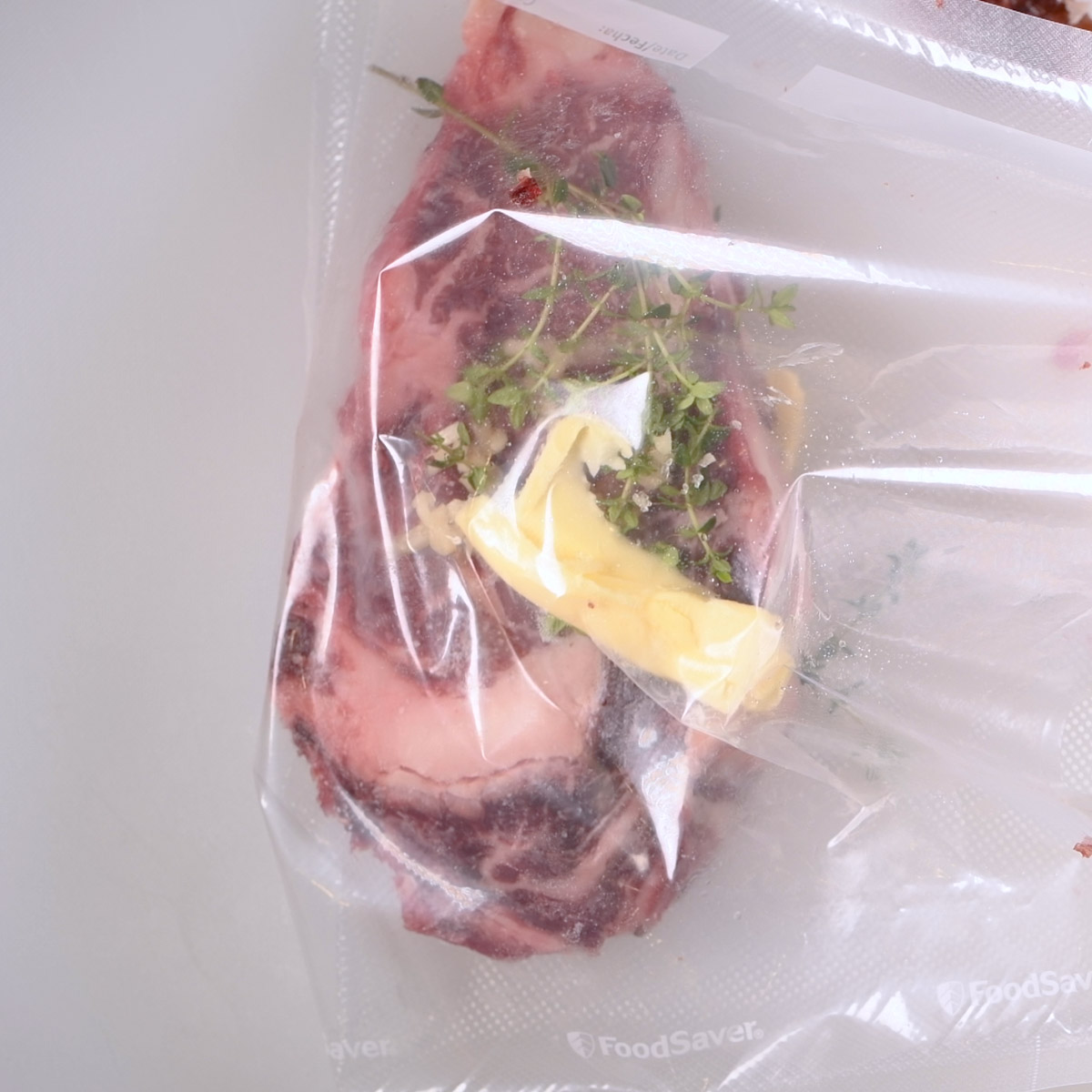
Place the ribeye in a sous-vide bag with butter and thyme and seal.
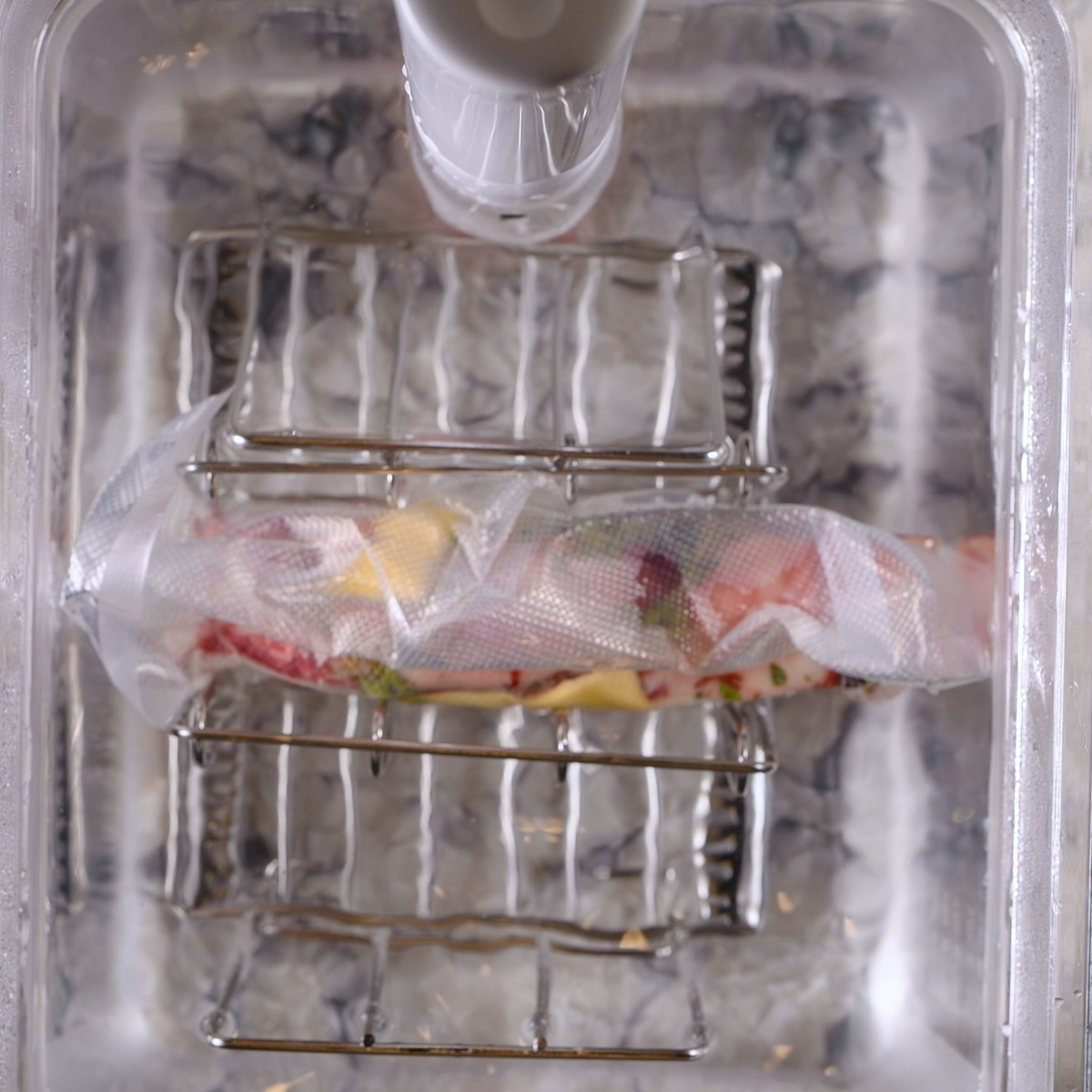
Cook the sealed steak in a sous vide water bath.
Reverse Sear in Beef Tallow
To finish this steak, I heated up a grill plate to 650˚F in my Kamado Joe. Then I placed a tablespoon of Wagyu beef tallow on the grill just before the steak went down. The beef tallow added one more dimension to an already great steak. Searing a steak in beef tallow can elevate your home-cooked steak to a gourmet level. I'm a big fan.
Achieving a well-browned crust on a steak cooked sous vide involves first drying the steak with paper towels, then subjecting the steak to high heat for a very short period of time. You don’t want to risk overcooking the outer layers of the meat. It’s best to sear the steak rapidly to achieve the perfect crust without overcooking. Only 60-90 seconds per side is all it takes for the Maillard reaction to occur and create a wonderful char on the steak.
No Need to Let it Rest
Cooking the steak first in a sous vide water bath minimizes the amount of time the steak needs to rest before serving. Since the steak was not exposed to high heat during the initial cooking process, the steak doesn't need to rest more than a minute or two. By the time you bring the steak indoors and put it on a plate, it's ready to eat.
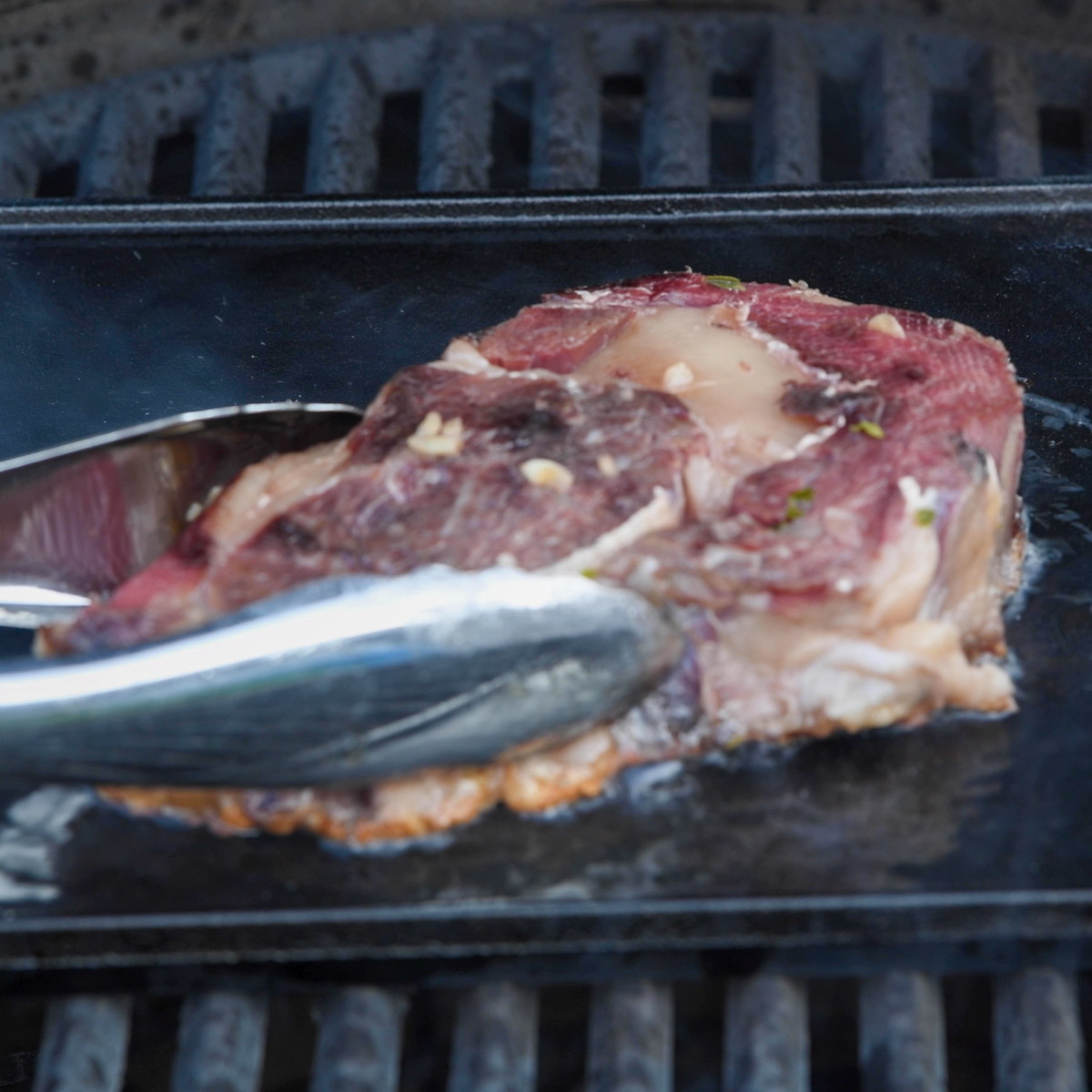
The result was an absolutely marvelous, perfectly cooked steak. I topped it with a little homemade Bernaise sauce and added a baked potato.

Substitutions
In planning for this recipe, I found a prime Wagyu ribeye and used that in the preparation. A prime or choice ribeye would also have worked.
Equipment
The steak in this recipe was made using dry aging bags, a sous vide bath and a griddle plate for my BBQ.
Storage
Store leftover ribeye in an airtight container in the refrigerator for up to 3 days. Reheat in a microwave in 30 seconds increments.
Top Tip
Don't age the ribeye any longer than necessary. The ribeye in this recipe was aged for 7 days and that was at least 2 days too long.
This Reversed Seared Dry-Aged Ribeye recipe highlights the unparalleled depth of flavor that dry aging brings. The journey from dry aging and gentle warming to the final sear transformed this ribeye into something special. I hope this view into the world of reverse searing has inspired you to embark on your own culinary explorations. Happy grilling!
Related
Looking for other recipes like this? Try these:
Pairing
These are my favorite dishes to serve with this recipe.
📖 Recipe
Reverse Seared Sous Vide Dry Aged Steak Recipe
Ingredients
Equipment
Method
- Dry age the steak in an Umai bag for 5-6 days according to manufacture's instructions.
- Trim the steak and cook sous vide to 122 degrees for a medium rare steak (after searing).
- Sear in beef tallow for 60-90 seconds per side. Serve hot. Enjoy.

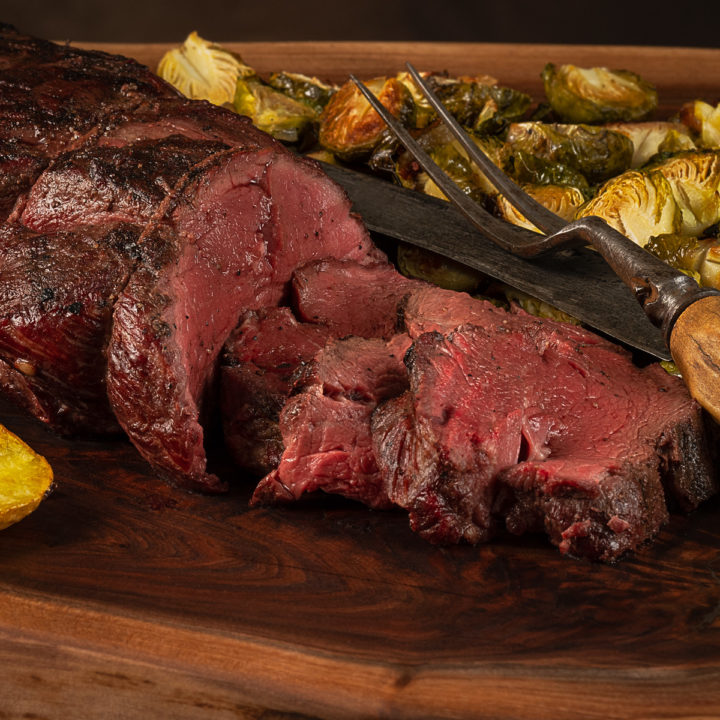
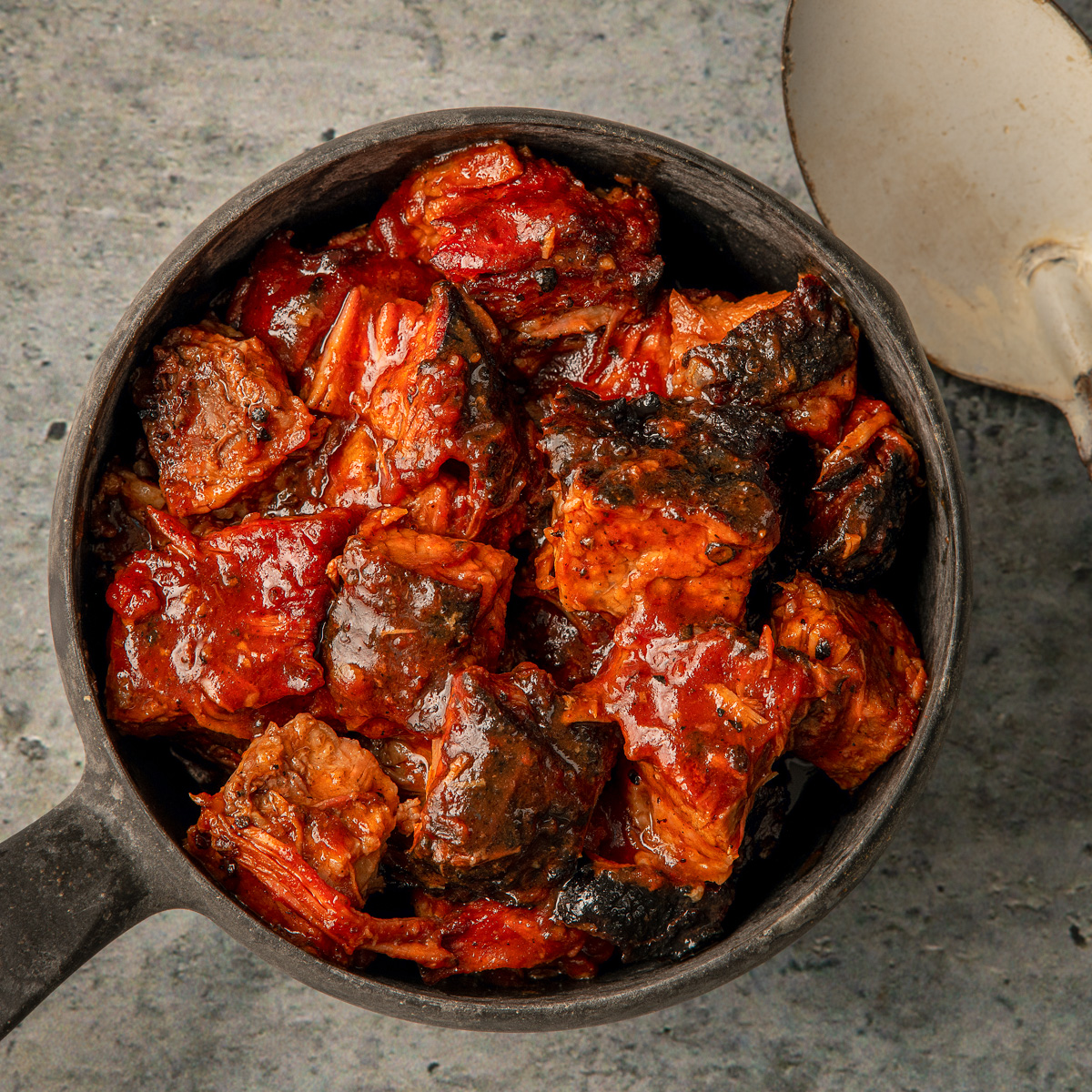
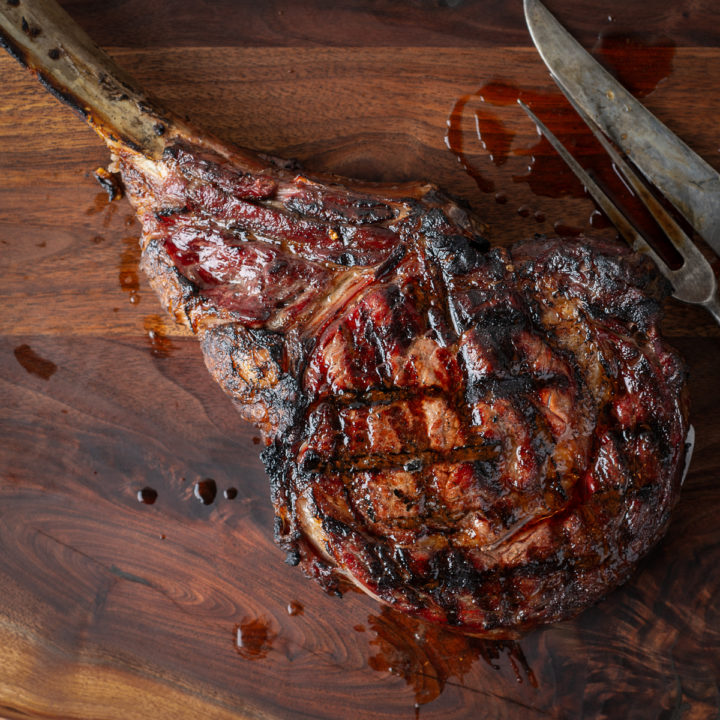
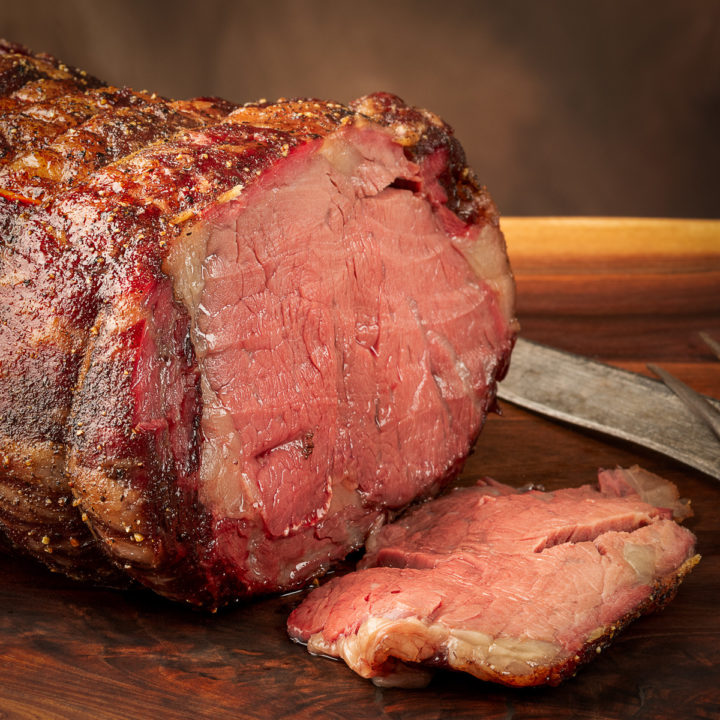
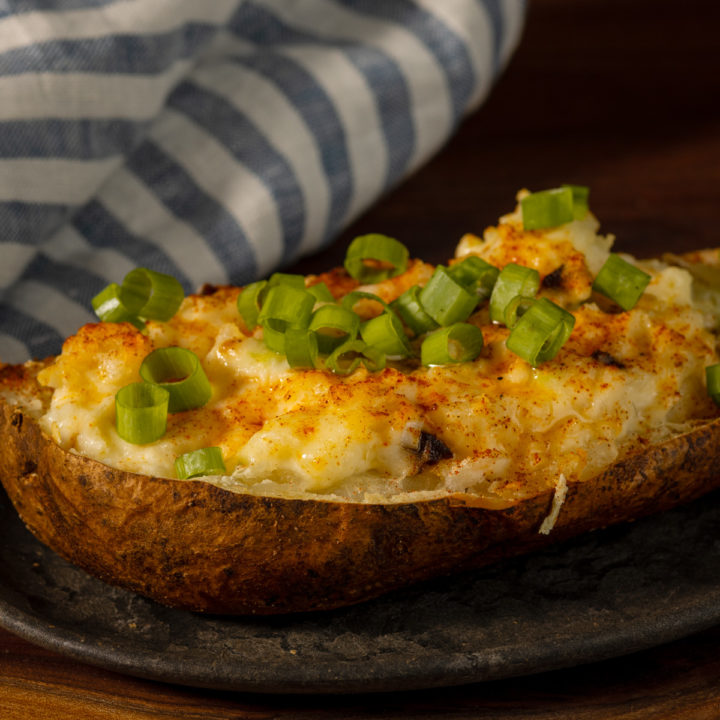
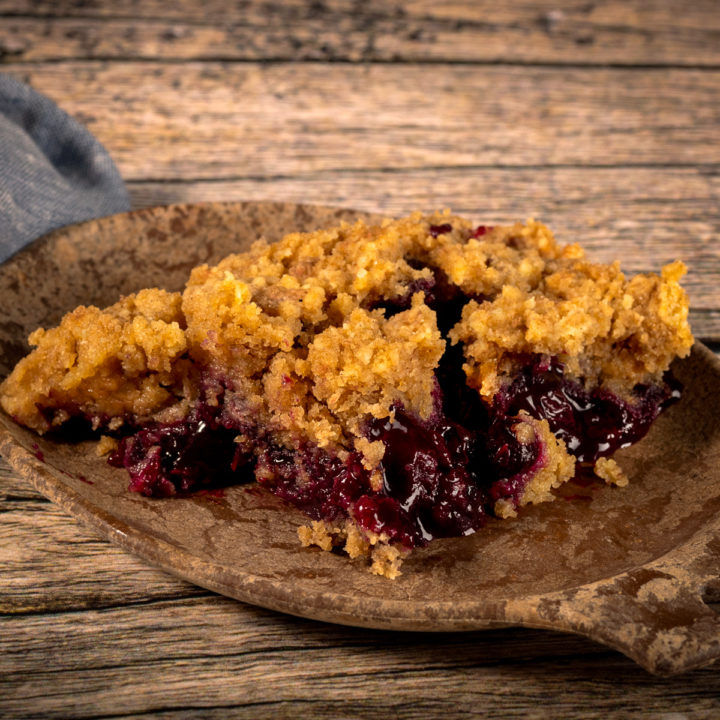
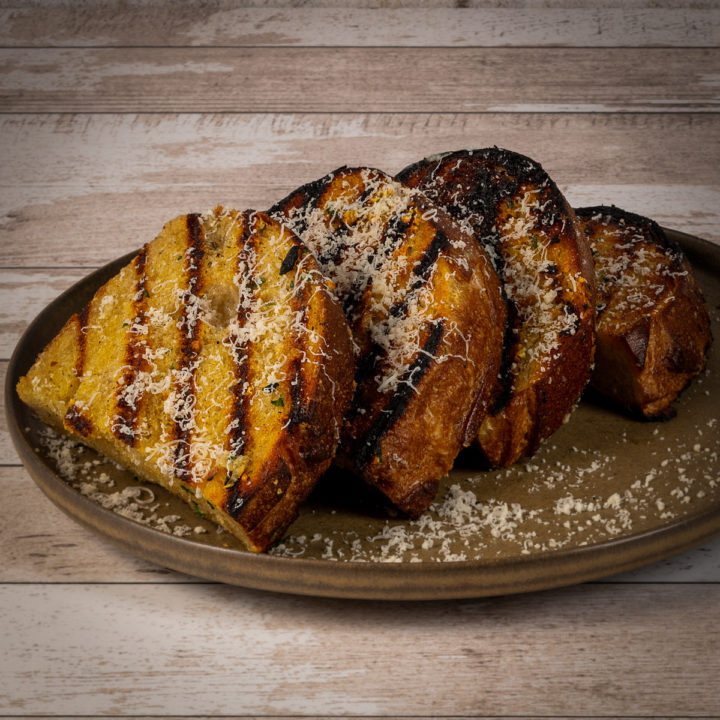
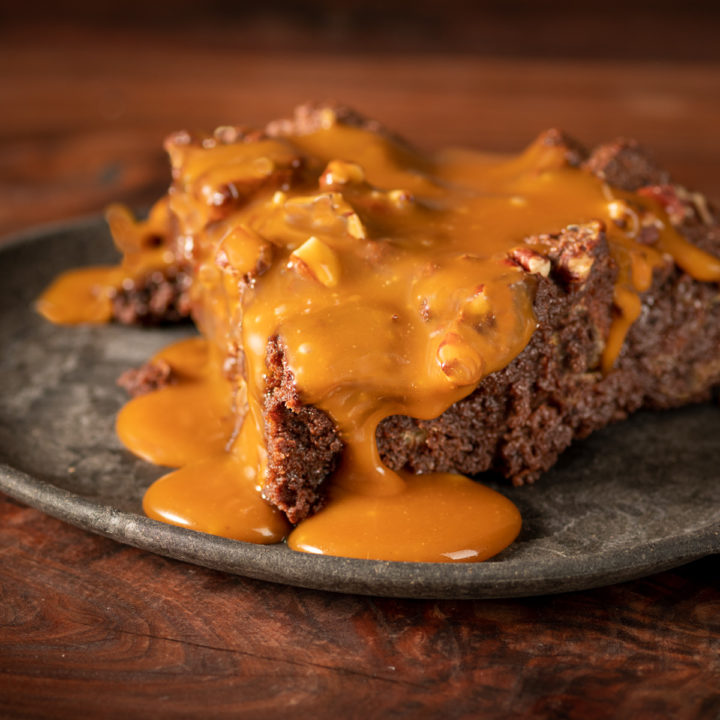
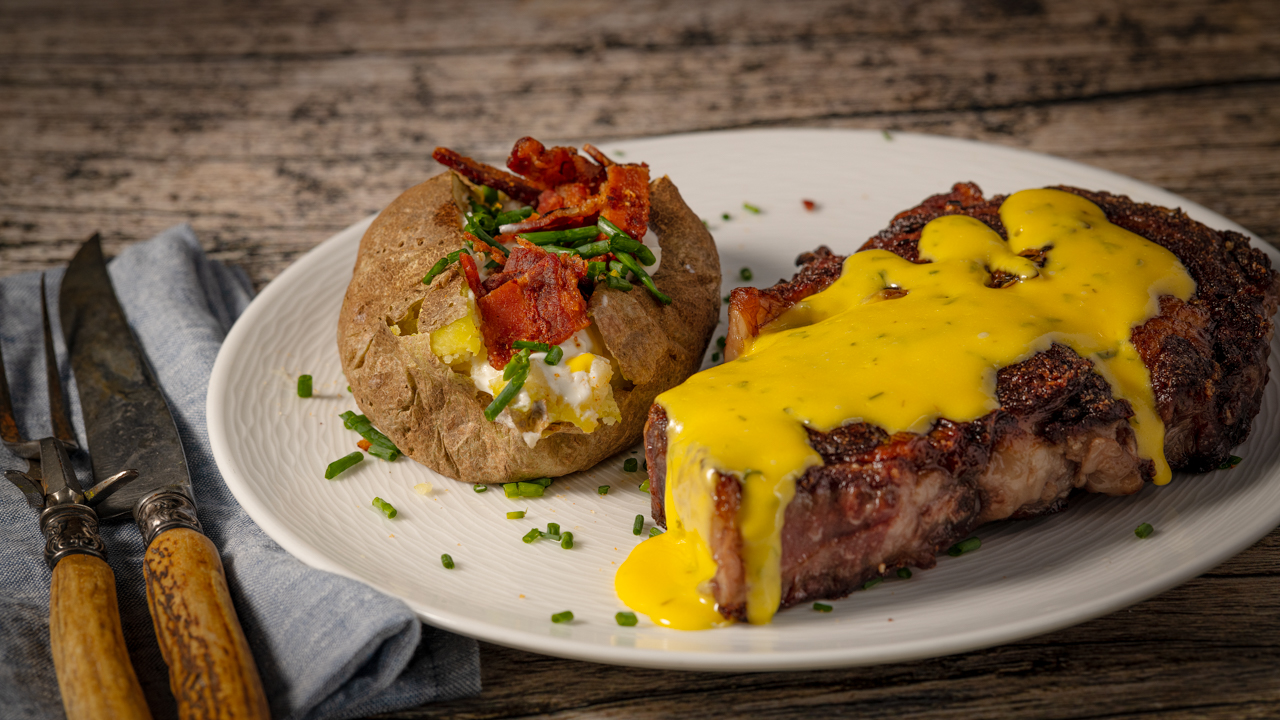
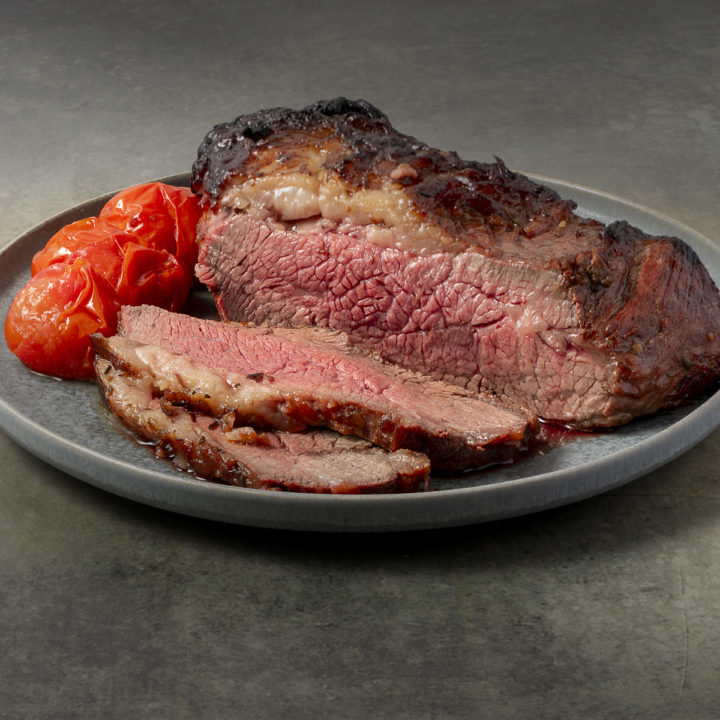
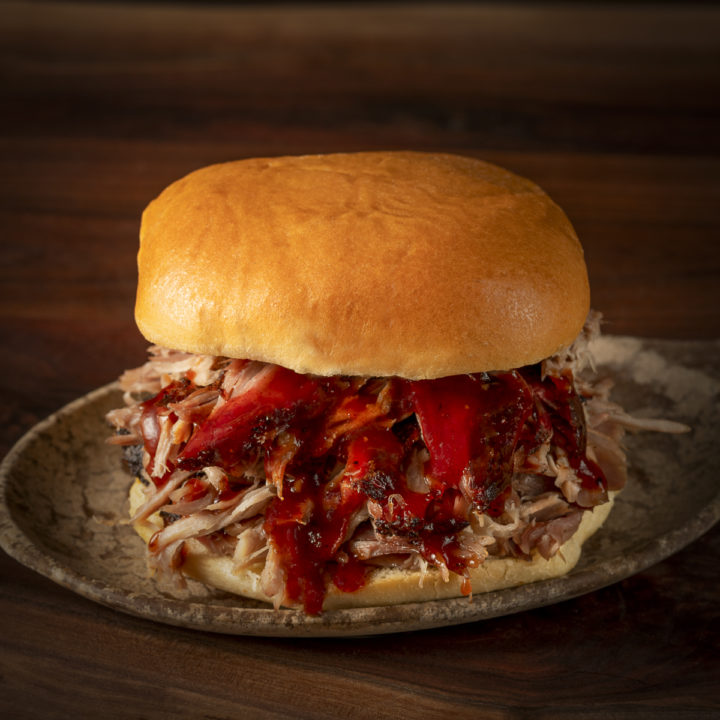
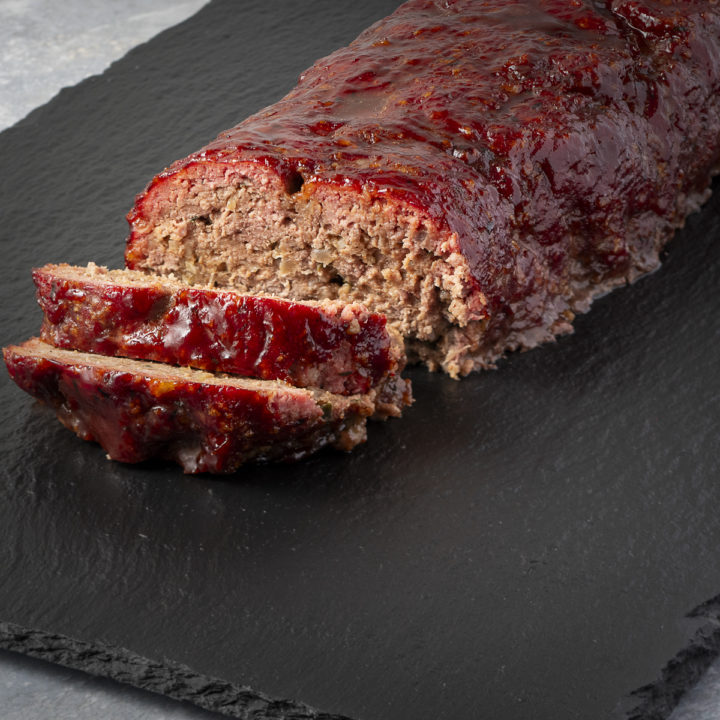
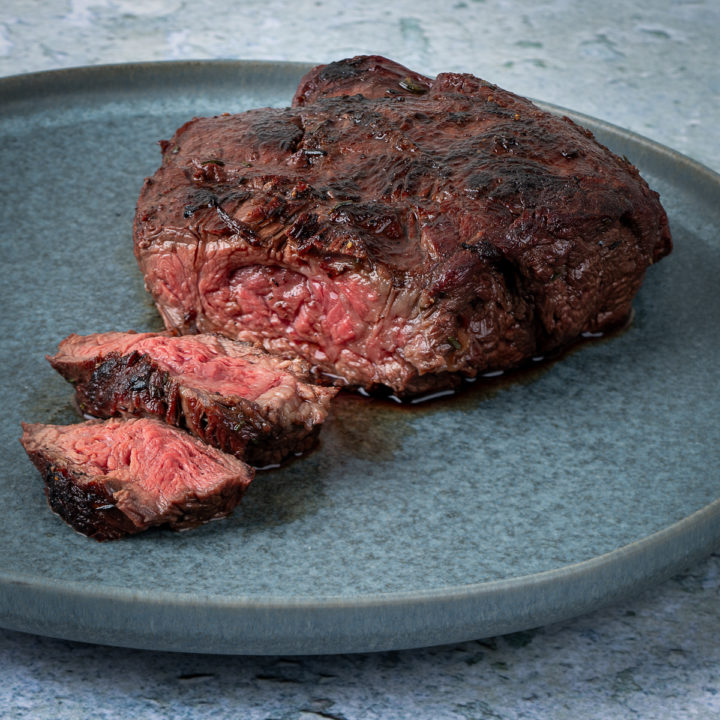
Leave a Reply